Understanding the parts of your machine increases your sewing knowledge and helps you become a better sewer. An essential part of the machine is the bobbin. This little spool holds the lower thread that interlocks with the needle thread to form each stitch. This post explores six common questions sewers have about bobbins.
Can My Sewing Machine Use Any Type of Bobbin?
If you have only had/used one sewing machine, you may think all bobbins are the same. In truth, each sewing machine requires a specific bobbin. You may be able to fit another bobbin into your bobbin case but if is doesn’t fit perfectly or the weight is not correct, it can result in poor or no stitch formation and/or tension problems. Even if you have two machine models of the same brand, they may use different types of bobbins. Check your owner’s manual or talk to your local machine dealer if you are unsure about the exact bobbin your machine requires.
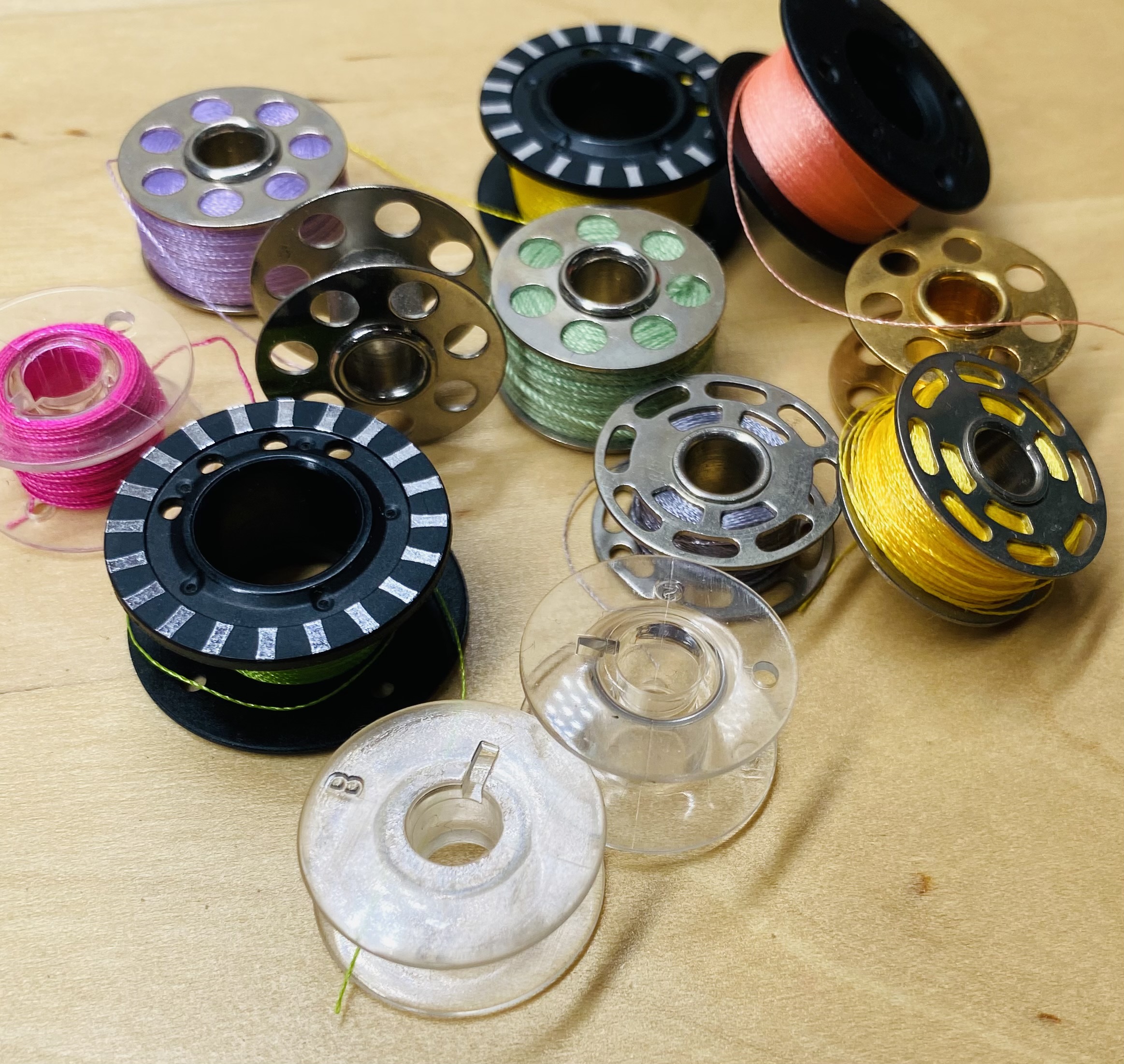
How Do Bobbins Differ?
Bobbins are made of plastic, metal and cardboard. As I said before (it bears repeating), they come in different sizes and different weights, specifically made for a particular machine. Always use the type that comes with your machine. A common size 15 bobbin is easy to find and fits a wide range of models under several brand names. Other bobbins, such as the BERNINA Jumbo bobbin are specific to BERNINA models and do not work with any other brands. Again, your owner’s manual and the sewing store that sells the brand can help you make sure you have what you need.
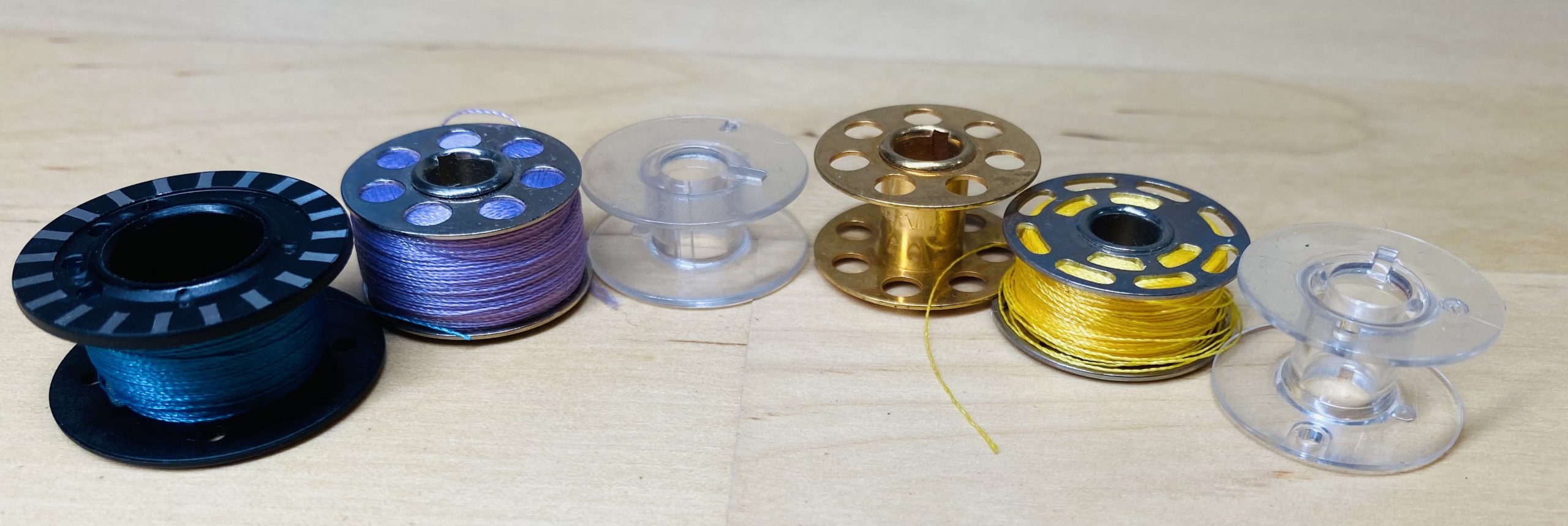
How Much Thread Does a Bobbin Hold?
The yardage depends on the size of the bobbin and the weight of the thread. Bobbins hold more if winding a fine thread such as 60 weight cotton thread and less for a thicker thread such as 40 weight embroidery thread. Obviously, a large bobbin holds more thread than a smaller one. The largest bobbin available on home machines is the BERNINA Jumbo Bobbin found on most of the current BERNINA machines. It holds 70-80% more thread than the bobbins on most other machines, requiring less time for winding and changing bobbins as you sew.
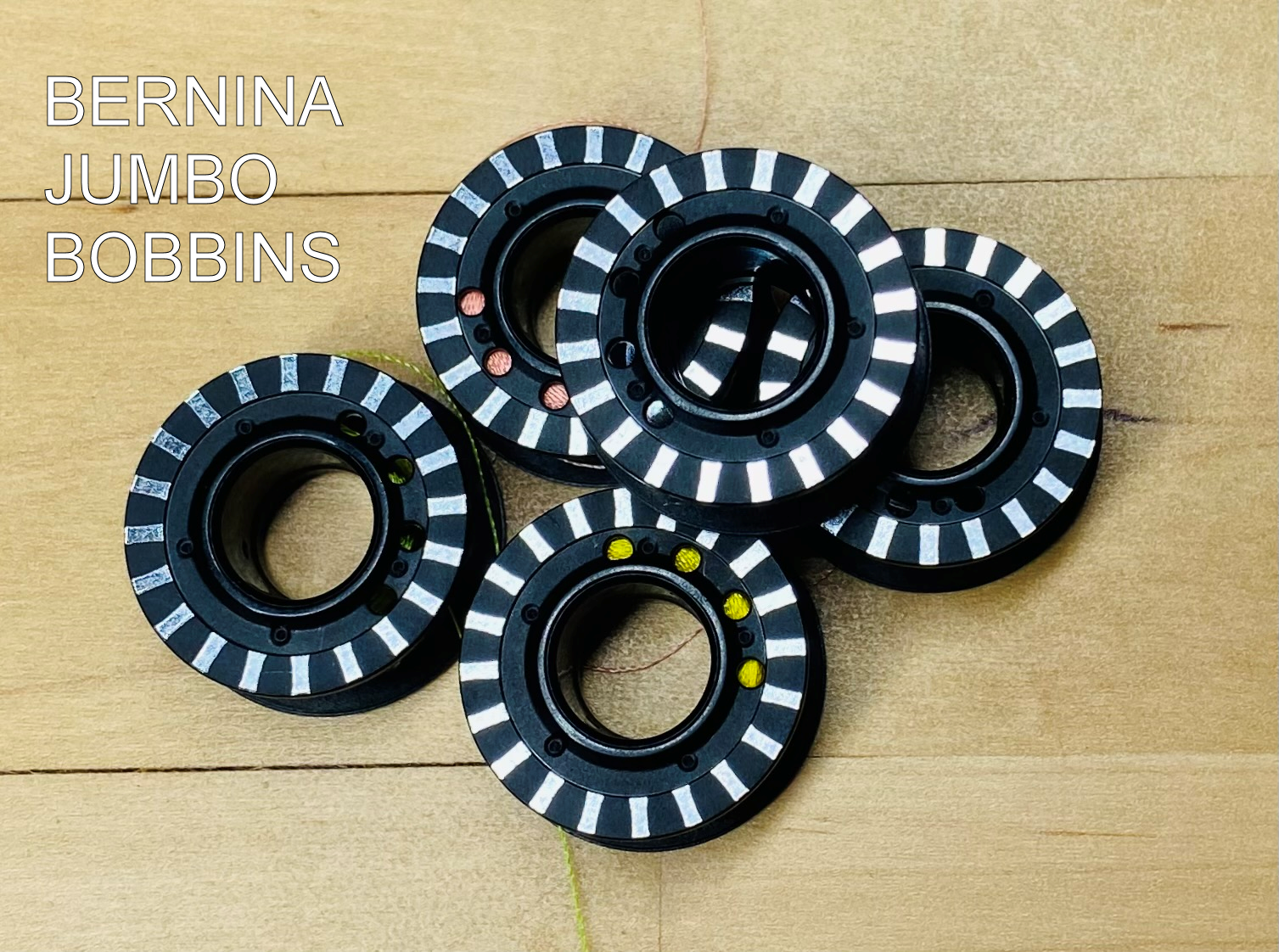
Is It OK to Add Thread to a Half-filled Bobbin?
The best sewing practice for winding a bobbin is to wind thread onto an empty bobbin. You may not have problems each time you wind a new thread over existing thread, but you are setting the stage for a potential problem. The problem arises when the outer thread is used up and the machine has to transition to the original thread. If the transition is not smooth, it can jam the machine and cause possible damage to it. Stripping the bobbin and winding onto an empty one is always a safe choice.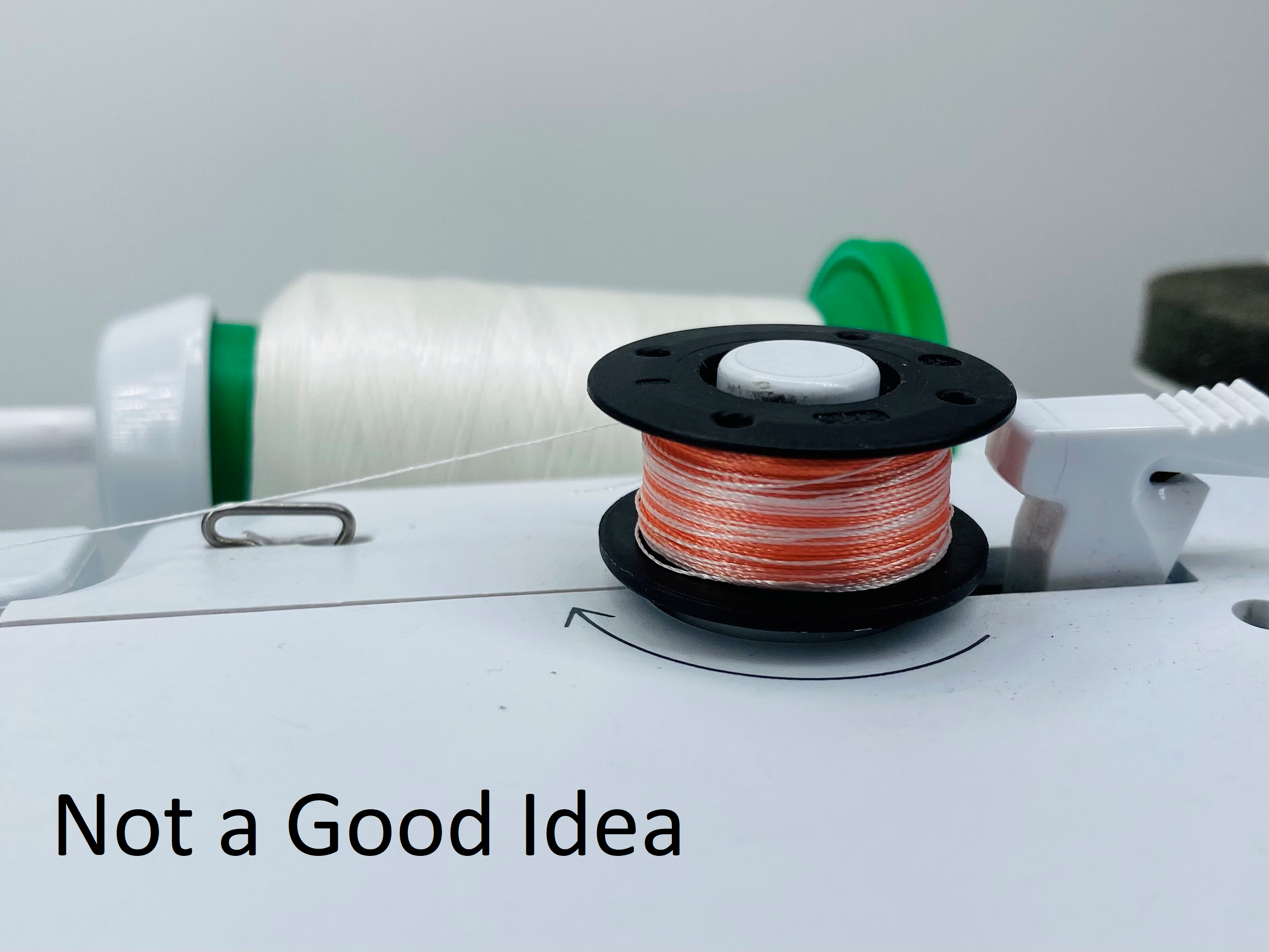
How Many Bobbins Do I Need?
Only you can answer this question for your sewing situation. It depends on what type of sewing you do, how much you sew, the range of thread colors you use, and how willing you are to strip a half-filled bobbin (see the previous question) to wind a different color onto it. Every new machine comes with a few empty bobbins, usually 3-6. Very few sewists find this to be enough so, be sure to pick up a few new ones before you even take the machine home. As you sew, you can tell if you need more bobbins to minimize thread loss (stripping the bobbins to wind a new color) and/or make your sewing process more efficient. I use the Bobbin Savers shown below to corral them and keep them from unwinding.
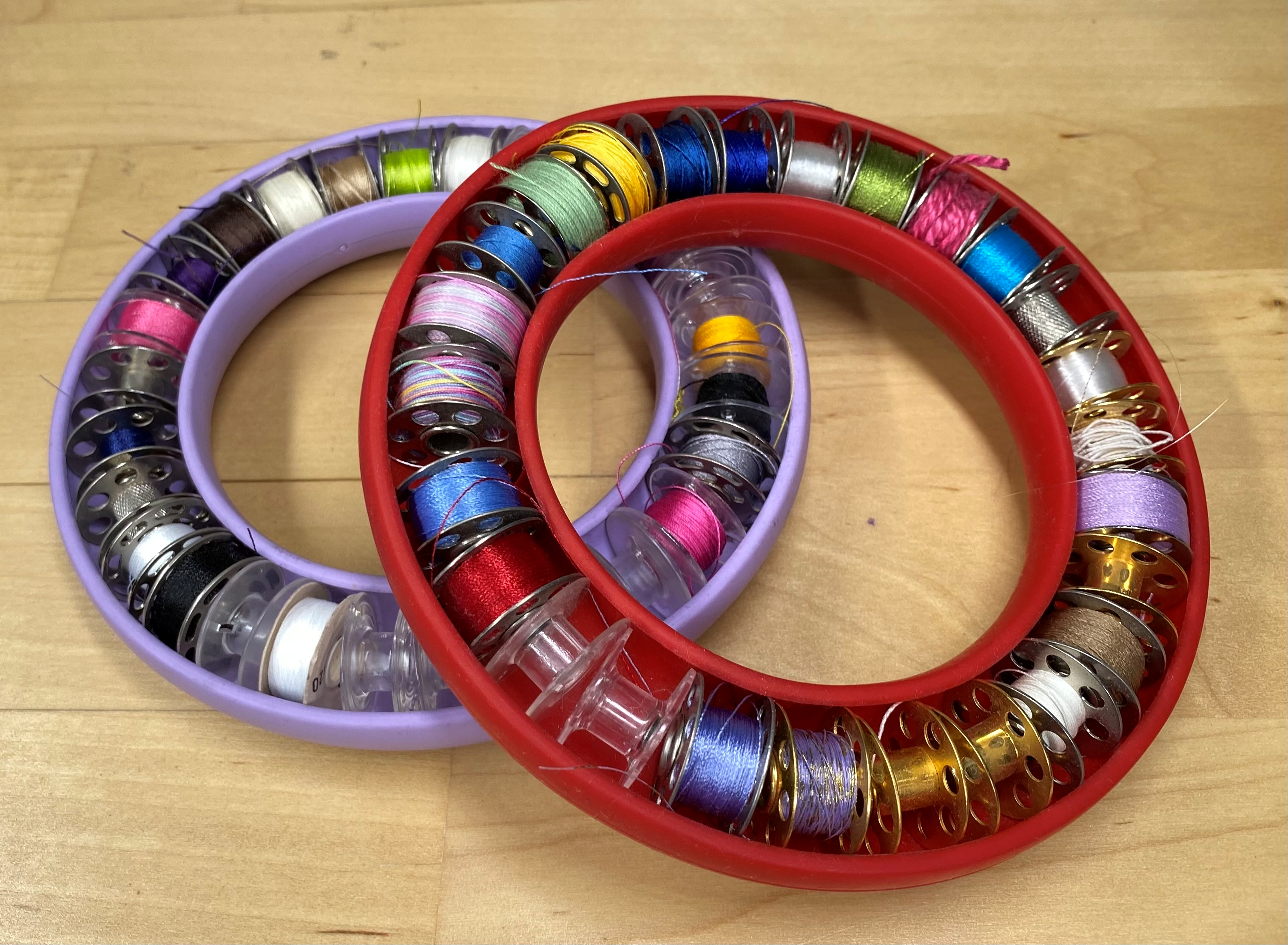
Can My Machine Use Pre-Wound Bobbins?
Pre-wound bobbins are used in high-production sewing situations such as longarm quilting and machine embroidery. Some domestic machines can use pre-wound bobbins and others can’t so this is another question that can be answered by your machine dealer. You may want bobbins wound with neutral colors or if you are trying to match the needle thread color, go for a box that has all of the colors of the rainbow.
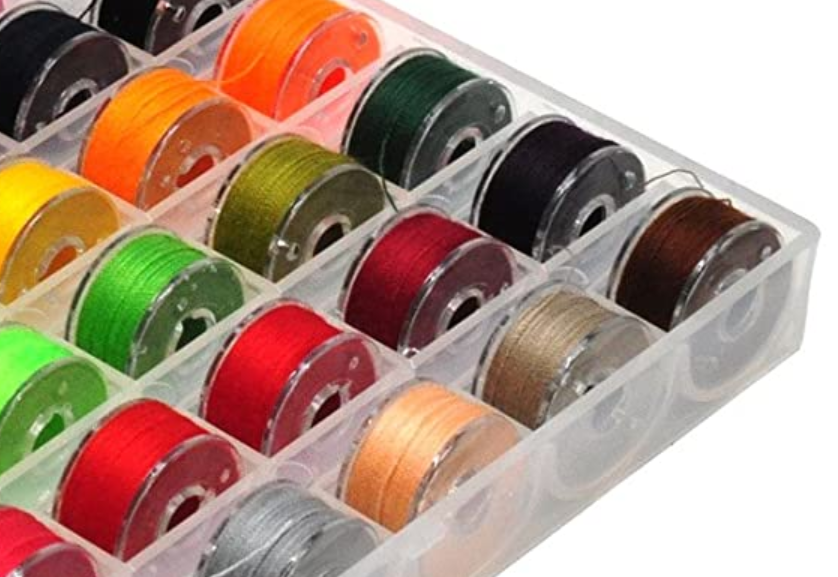
I just read over my post before publishing it and I realized several of the answers have you asking your local sewing machine dealer. If you don’t have one, I encourage you to look around and see what you have nearby. The employees usually have a wealth of knowledge and most machine shops teach classes that cover all types of sewing. Even if the store doesn’t have your brand, there’s a lot to learn from the owner and the employees and you may make a few new friends!


I have bobbins like the one shown with the gold/yellow thread. I am wondering what machine uses this bobbin?
Hi Karyn
I think you are looking at the silver bobbin near the right edge of the photo with two rows of oblong openings and yellow thread. This bobbin is for older BERNINA machines that have a rotary hook system. Model numbers include:
BERNINA 1000, 1000S, 1000UP, 1001UP, 1070 and 1630
BERNINA artista 180 and 185
BERNINA aurora, 435, 450 and 640
BERNINA artista, 200 and 730
BERNINA 560 and 580
Hope this helps!
Susan
May be you can answer this question ! What is the maximum thread thickness I can use in the bobbins for old (vintage) Bernina ? Not for decorative purposes but for jeans. Look like I cannot balance the tensions upper/lower with the Coats epic 30 I have for this purpose. Whatever how I turn the screw, the lower tension gets irregular.
Hi Noelle –
The bobbins will easily take 30 weight thread but it is used for bobbinwork with regular thread in the needle. Then, you sew on the wrong side of the fabric so the bobbin thread shows on the right side of the fabric. It sounds like you are trying to use 30 weight in the bobbin and the needle. I don’t know of any domestic sewing machine that will do that. You can use 30 weight thread in the needle (must be a topstitch needle that has a larger eye). You may need to adjust the tension by decreasing the needle tension a little at a time until the stitch looks like you want it to. I would also make the stitch length longer – about 3-4 mm. That gives more room for the thick thread to lay flat on the fabric as the stitches form.
Hope this helps!
Susan